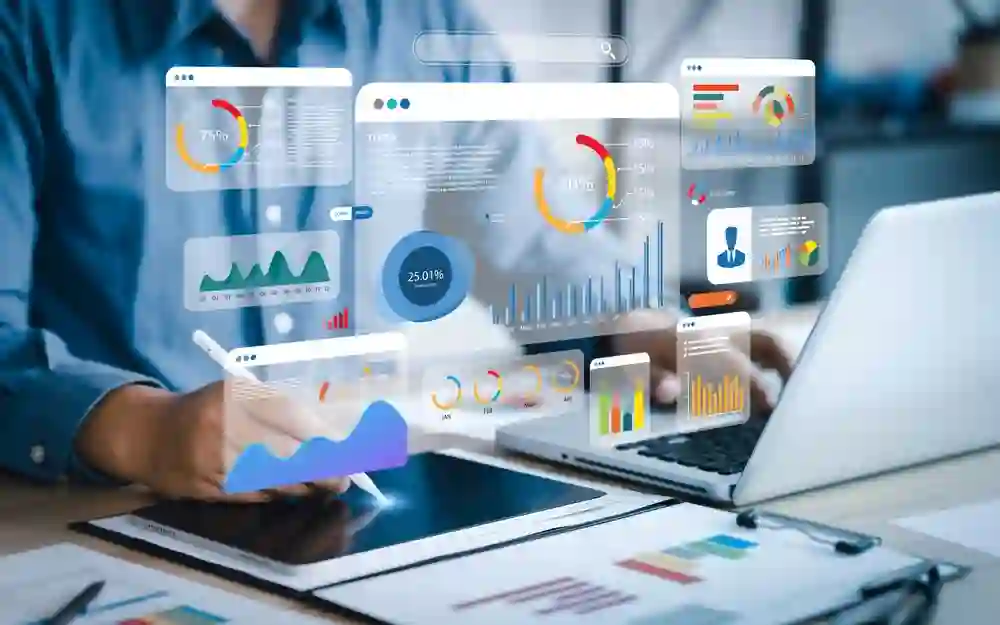Understanding Predictive Analytics in Business Strategy with AI
Predictive analytics leverages data, machine learning, and AI to forecast future trends, identify opportunities, and mitigate risks. By integrating predictive analytics into your business strategy, you can make data-driven decisions, optimize operations, and stay ahead of the competition.

Predictive analytics with AI might seem overwhelming at first – it sounds like something right out of a futuristic novel. Yet, in simple terms, what we're talking about here is using AI to forecast future trends within your business strategy. And while the technology behind this is mind-blowing the focus is actually on giving your business the insights needed to plan for the future effectively. According to a study by PwC, AI-focused companies are forecasted to snatch an additional $15.7 trillion in global GDP by 2030. That's a lot of potential profit just waiting to be unlocked by harnessing the power of predictive analytics.
Vital Importance of Predictive Analytics
So why should companies pay attention to this technology trend? First off, staying ahead of the competition is crucial in today’s market. What this means is that predictive analytics is about playing catch-up in a sense but it’s also about foreseeing what’s around the corner. When you can predict market trends or understand what your customers will want tomorrow, you're not just keeping up—you’re setting the pace. This kind of insight can really differentiate your business from the rest, and give you that competitive edge that every company craves.
Secondly, there’s the risk factor—every business decision carries some, right? The good news is, predictive analytics acts like a safety net here. By grounding your business moves in solid, data-driven forecasts, you reduce the guesswork and enhance decision-making confidence. This can significantly cut down on costly errors or misjudged ventures that could set your business back. According to a study by Bain & Company, businesses that have this type of advanced analytics are three times more likely to pull ahead of their competition. That’s quite a big deal and clearly showcases the transformative power of leveraging predictive insights in your strategy.

Two Major Benefits of Predictive Analytics
When we dig deeper into the specific benefits, two major advantages stand out for businesses incorporating predictive analytics. To start, there’s the marketing aspect of it. Predictive analytics can completely reinvent how businesses engage with and retain customers, which gives a whole new level of efficiency and focus to marketing campaigns. A prime example of this is Amazon’s recommendation engine, which personalizes shopping experiences and drives an estimated 35% of the company's revenues, according to a study by McKinsey. This shows the tremendous potential of tailored marketing strategies fueled by advanced analytics.
Moving on to the second advantage, predictive analytics profoundly impacts operational efficiency. It allows companies to fine-tune their operations and manage resources more effectively—resulting in minimized waste and boosted productivity. This aspect is especially critical in industries like manufacturing or logistics, where optimizing the supply chain and production schedules can lead to significant cost savings and improved output. By predicting potential issues and pinpointing opportunities, companies can plan better, react faster, and operate smarter. What this means is that predictive analytics doesn’t just add a layer of intelligence to business operations but at the end of the day, it transforms core activities to be more responsive and efficient in any market landscape.
Achieving Excellence with Predictive Analytics
Making the shift towards predictive analytics is far from just following a trend--it comes down to adopting a systematic and measured approach to enhance your business operations. Initially, it's critical to set out with well-defined objectives: exactly what are you aiming to predict? Whether it be customer behaviors, sales trends, or some other aspect, pinpointing your goals will guide all subsequent efforts.
Once your targets are clear, the next major step is to secure high-quality data. The truth is, the effectiveness of predictive analytics depends massively on the quality and pertinence of the data input into AI models. Garbage in, garbage out, as they say. This means your data sources need to be reliable and the data itself should accurately represent the variables you are analyzing. With your strategy roadmap in place, which provides a clear plan of action based on defined objectives, you can detail the steps needed to transition from where you are now to where you want to be. This facilitates smoother implementation and measurable progress. And with your data in hand, you can proceed with greater confidence.
Keeping Predictive Analytics on Point
When you say yes to predictive analytics you are saying yes to an ongoing commitment. It’s crucial to understand that as the market dynamics shift and fresh data emerges, your predictive models cannot just sit static. They need fine-tuning and recalibration to stay accurate and relevant. Continuous monitoring and adjustments are key to keeping them practical and effective. Conducting regular audits of your analytics processes is critical. These check-ups help data quality remain high and the insights are still on point. Also, staying informed about the latest advancements in AI technology can provide new tools and improved methodologies for refining your analytics.
Also, when the whole team values and understands the power of data insights, integrating advanced analytics into daily operations becomes smoother and more productive. According to a survey by Deloitte, about 59% of enterprises utilizing predictive analytics had to modify their original models to better suit changing conditions. This goes to show the necessity for adaptability in the use of predictive analytics. It’s clear that adopting this tech is not just about deploying a system, but nurturing an adaptable, informed approach to business strategy.
By empowering your decision-making with foresightedness offered by AI, your business not only stays relevant but also paves the path for sustainable growth and success in the tech-driven future.



